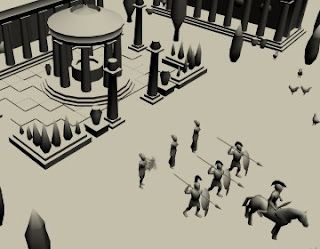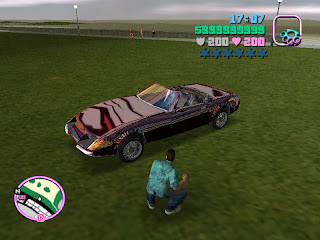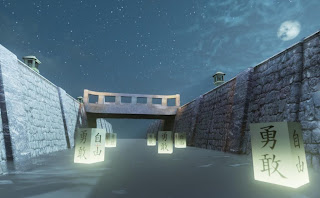When it comes to lighting in a game, it can make the difference between a good and a great game. Lighting helps enhance the realism that a character experience while they traverse a brightly lit mountain peak, or a dark, dank dungeon. The right type of lighting can help to set the mood for the entirety of the game. Current game developers are very fortunate as they have a large amount of lighting styles they can use in their current projects. These lighting styles are Ambient, Diffuse, Specular, and Emissive.
The first style of light I will be addressing is ambient lighting. This style of lighting is rarely used in games as it not very flexible for the one designing the game. An ambient light used in a game has a fixed intensity and position, while effecting all of the objects in the scene the same way. The only scenario where this is used I when a developer would want to light every object in the scene the same way.
The second mode of lighting used is Diffuse Lighting. Although it is used in game, it is generally used when trying to determine where the light source should be coming from in a game. This is because diffuse lighting is when rays of light emitted from the light source bounce off of the object at their respective angles, giving the object a bright side and a shadowed side.
 |
Example of Diffuse Lighting
|
My personal favorite type of light to have in a game is Specular Light. Specular lighting is the use of bright spot highlights on the object. What these highlights do for the viewer, is show exactly where on the object the light-source is most intense. Specular lighting is used in game to give reflections to surfaces such as water, or a metallic surface such as a sword or chalice. This is my favorite as it really gives the objects a shine that no other light source is able to develop.
 |
Specular Lighting on the Car
|
The fourth and final type of lighting that can be used in games is emissive lighting. Emissive lighting that can tie everything together. This is because if a light source is present in a scene, it will take into account diffuse, specular and ambient light given off by the source. Emissive lighting is commonly used throughout games as it is able to tie everything together, while still keeping the scene looking great.
 |
| Emissive Light coming from the Torches |
Tune in next week when I will be going over how game design can have other benefits, besides GAMES!



No comments:
Post a Comment